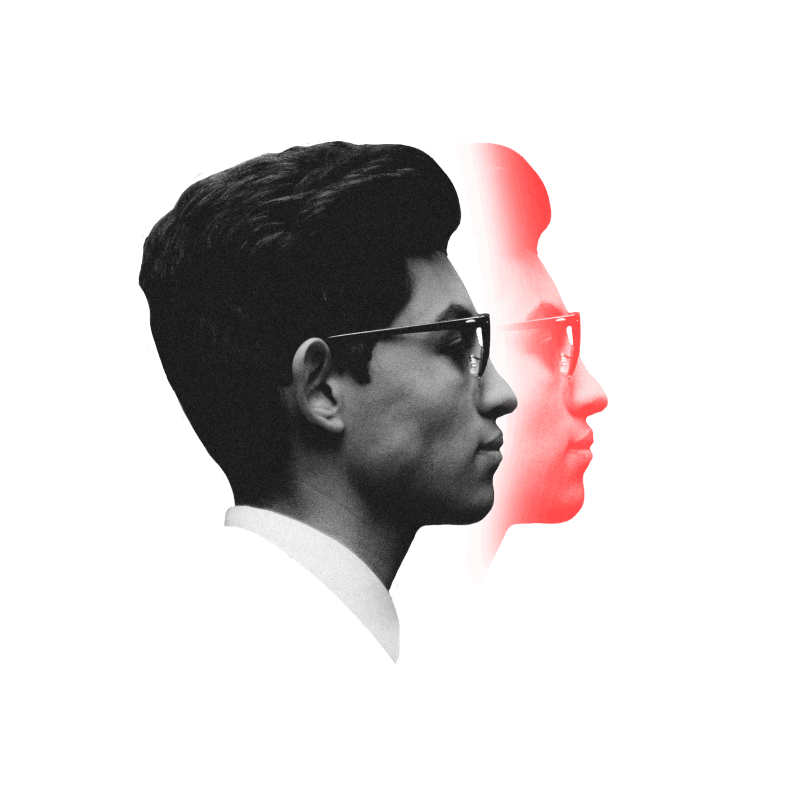The Art of Thinking Clearly
Edition #03 | June 2022
In this issue of the SHIFT: The Art of Thinking Clearly
For the last 10,000 years, human behaviour has not changed. Ever since then, we have been relying on memories and shortcuts to make sense of the world. They help us make decisions quickly and easily. But are these shortcuts always reliable? Do they always result in outcomes that benefit us?
Is there a way to work around the natural wiring of our brain?
To think more clearly….
Dose of Dopamine
Why You Can’t Resist The Next Episode

It happens to the best of us, you decide to go to bed on time. But as the end credits roll on the web series you are watching; you can’t resist the temptation of watching just one more episode.
What is happening here?
When you see, touch, or smell something that we desire, it becomes irresistible. You make impulsive decisions, that may not be in your best interest, because dopamine gets fired in your brain. Our brains are wired to respond positively to instant gratification.
What does dopamine do to you? It’s something like this:
Dopamine makes you jump for joy
When you reach a goal or get a toy.
In nature, it helps you respond to food cues.
“Yippee!” Rewards cause your neurons to fuse.
Dopamine feels great so you try to get more.
It rewarded our ancestors’ will to explore.
Cocaine triggers dopamine. Caution to all:
Joy without goal-seeking leads to a fall.
Dopamine causes expectations.
Correct predictions bring good sensations.
Dopamine flows when you feel like “I’ve done it.”
If things are done for you, dopamine
will shun it.
– Loretta Breuning
Special thanks to Loretta Breuning for lending us her incredible poem! Loretta is a PhD and the author of ‘Habits of a Happy Brain’ and ‘The Science of Positivity’.
What’s Past Is Past
The Effects of Sunk Cost Fallacy

Do you keep doing something even though you know its bad for you? Keep going to a hairdresser that doesn’t quite do the best job, but you’ve been his client for years. Stuck to processes you and your team spent months developing, even though they do not yield any results?
That’s the Sunk Cost Fallacy keeping you from making better decisions!
Hal Arkes and Catherine Blumer define it as “a greater tendency to continue an endeavour once an investment in money, effort or time has been made”.
The Sunk Cost Fallacy occurs because human behaviour is driven by the need for consistency. We do not change our minds because that would imply that we used to think differently once. By carrying on with an old decision or investment, we try to save face.
The SHIFT

Get clear on what you want. What is your objective? You cannot recover the time or the money that you have already spent on something. But that is no reason to carry on with losses. By focusing on your end objective, you can delay your gratification.
Your objective is a good haircut, while or not necessarily just maintaining a good relationship. By focusing on the return on investment, you become ready to cut your losses. You begin to focus on what you would be gaining instead.
Let go of your fear of failure. The world is constantly changing, and so should you. Not all ideas and decisions will succeed. But you can always make a better decision.
Increasing Persistency
The Insurance Industry Sees A Shift

When one of the top 5 global players in Life Insurance came to us because customers were not renewing their insurance policies, here’s what we found:
Customers did not see the long-term benefit of life insurance. It lacked relevance to their everyday life.
The Heuristics:

Projection Bias
Overestimating how much our future selves will share the same beliefs and behaviours as our current selves.

Instant Gratification
The preference for smaller immediate rewards over larger but delayed rewards.

Functional Fixedness
The tendency to see only one known use of something, though it may also have other uses.
The Behaviour Science
The communication from the insurance company lacked impact. It did not provide information on all the premium renewal options or bring out the benefits derived from the policy, causing its importance to weaken. Moreover, the communication was only sent to the policyholder – predominantly the male customers.
The Shift
We redesigned the communication sent out to customers. Linking the life goals of customers with insurance policies, creating relevance and impact. In a typical Indian household, women make decisions on domestic expenditure. A pathbreaking shift in the insurance industry, we included women in the communication efforts. Leading to an increase in payment motivation by highlighting the benefits to future generations.
The Outcome
Improved persistency, reduced cost to serve and enhanced customer engagement.
The SHIFT Listicle
The Art of Thinking Clearly
In a world where speed and ease are top priority, pressure mounts to make decisions quickly and efficiently. With a constant influx of information, how does one think clearly?
Your brain is wired to seek the least amount of effort in any situation. It was designed to conserve energy and seek patterns. So you can arrive at decisions and make sense of the world, without being burnt out.
Following are a few ways in which you can check if you are making a good decision, or if heuristics and biases are at play:

1. Question your beliefs:
Our beliefs influence the way we make decisions. Our brains look for information that confirms our beliefs. For example, if you believe there is no demand for a certain product, you will never sell it. But is that a fact or an assumption? Question what you believe, and challenge it.

2. Think slowly:
Important decisions require time to think. Take time to gather necessary information, to weigh your options. What comes to mind quickly is just one option, not the only one.

3. Have a growth mindset:
Is it possible that your brain jumped on incomplete or biased information? Overconfidence in the decisions we make can hinder our growth. Having a growth mindset means that you reflect on your decisions before making them. It means making room for new knowledge. Room to make a better decision the next time.
Not Subscribed Yet?






